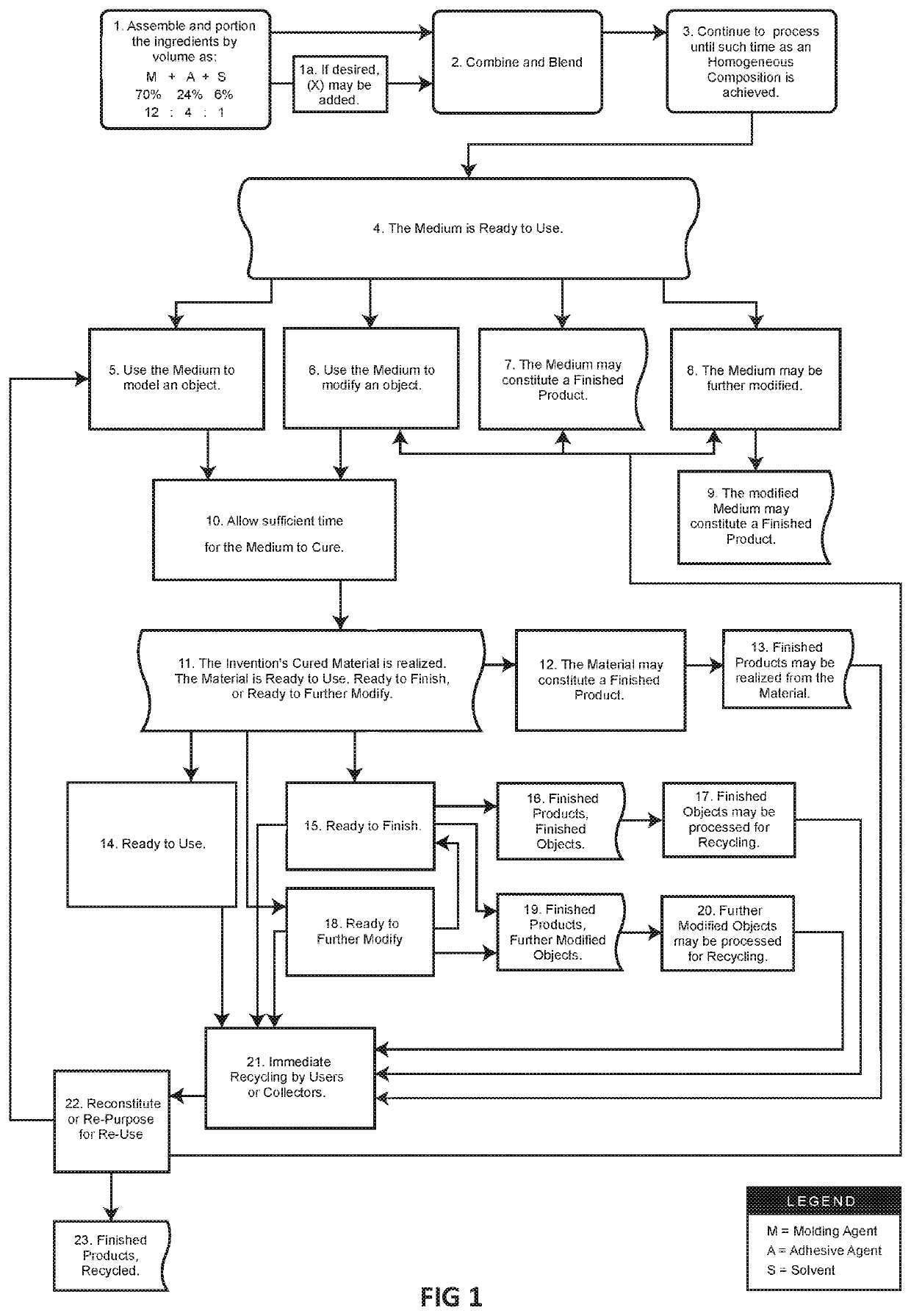Moldable composite material
- Summary
- Abstract
- Description
- Claims
- Application Information
AI Technical Summary
Benefits of technology
Problems solved by technology
Method used
Image
Examples
Embodiment Construction
[0016]This description, with references to the figures, presents non-limiting examples of embodiments of the present invention.
[0017]In one embodiment of the present invention, a moldable composite building material comprises an adhesive agent, a molding agent, and a solvent. The adhesive agent, molding agent, and solvent are combined until the three constituents form a homogeneous mixture. These three constituents may be combined manually, mechanically, or through any other means devised that will result in a homogeneous mixture. During the combination process, it may initially appear that the constituents are not becoming sufficiently integrated, however, continued mixing will ultimately lead to the desired homogeneous mixture.
[0018]Although a homogeneous mixture can be achieved through direct manual mixing, use of some mechanical apparatus (such as an auger, blender, grinder, or any device capable of effecting a blending or kneading action) is recommended for production of larger...
PUM
| Property | Measurement | Unit |
|---|---|---|
| Adhesion strength | aaaaa | aaaaa |
| Moldable | aaaaa | aaaaa |
| Adhesivity | aaaaa | aaaaa |
Abstract
Description
Claims
Application Information
 Login to View More
Login to View More - R&D
- Intellectual Property
- Life Sciences
- Materials
- Tech Scout
- Unparalleled Data Quality
- Higher Quality Content
- 60% Fewer Hallucinations
Browse by: Latest US Patents, China's latest patents, Technical Efficacy Thesaurus, Application Domain, Technology Topic, Popular Technical Reports.
© 2025 PatSnap. All rights reserved.Legal|Privacy policy|Modern Slavery Act Transparency Statement|Sitemap|About US| Contact US: help@patsnap.com

